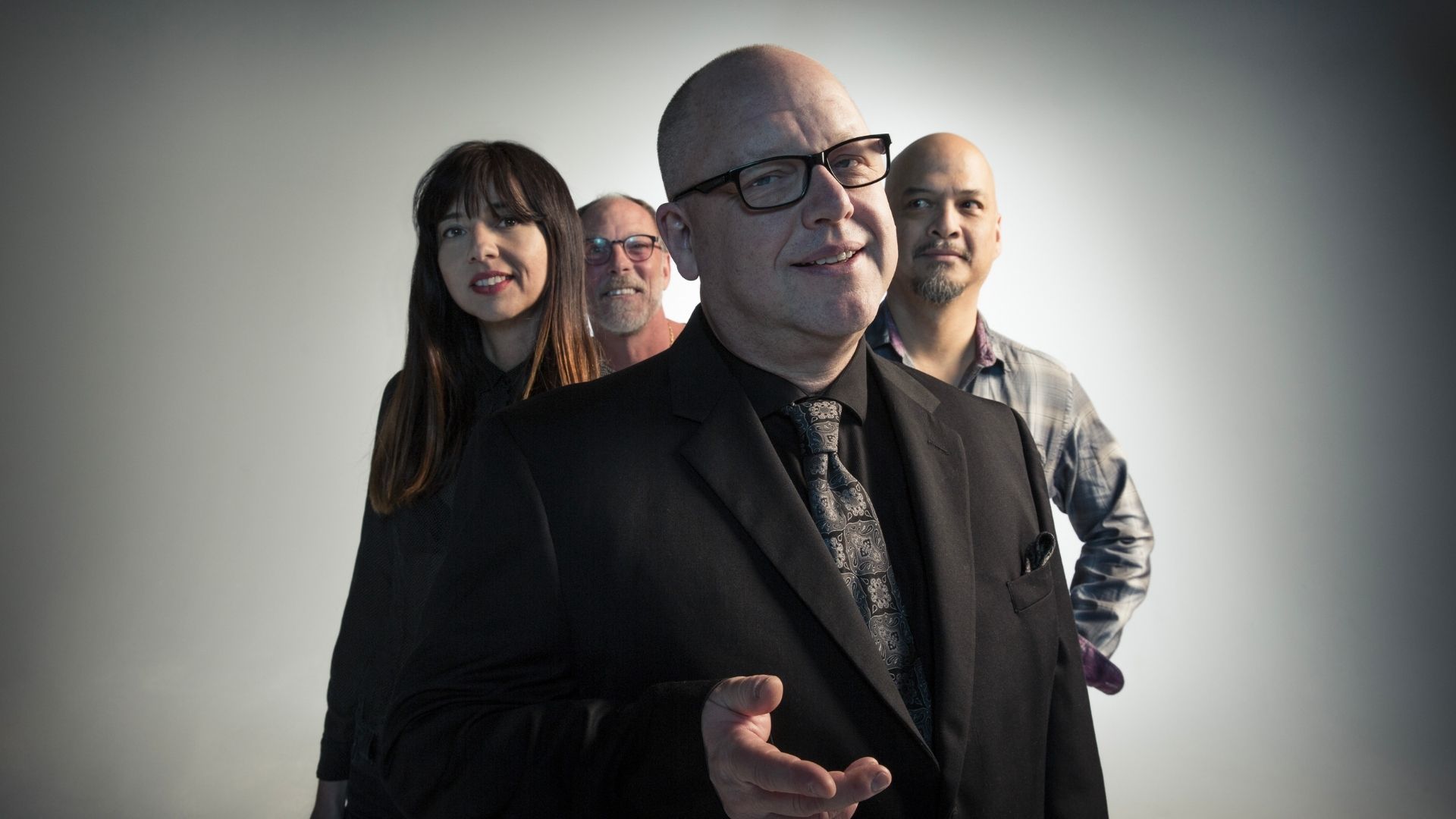How to Play “Where is My Mind” on Guitar?
The song “Where Is My Mind?” is by the American alternative rock band Pixies. It’s the seventh tune on their debut album Surfer Rosa, released in 1988. It was written by vocalist and guitarist Black Francis, who was inspired by his experience scuba diving in the Caribbean. The song has appeared in several television shows and films. Most notably it appeared in the last sequence and final credits of the 1999 film Fight Club. It is among the band’s hallmark songs and has spawned several covers. The song was rated 493 in Rolling Stone’s list of the 500 Greatest Songs of All Time in 2021.
🎸🎶 Ready to learn “Where Is My Mind” easily? 🎶🎸
Introducing the Guitar Learning Game app, your ultimate companion for learning your favorite songs on guitar. 🚀🎸
Whether you’re a beginner or brushing up on your guitar skills, Guitar Learning Game offers an immersive experience that makes learning fun and engaging.
Guitar Learning Game helps you learn your favorite songs on guitar right away:
- Real-time feedback on your performance
- 3D/AR hand models and chord positions
- Song-based learning, not tutorials or theory
- Gamified learning path for each song🎸🎮
Ready to embark on your guitar learning journey?
Click below to download the Guitar Learning Game:
Who are the Pixies?
Pixies are an American band whose distinct combination of punk rock’s ferocity and pop music’s irresistible melodies helped define alternative rock in the 1990s. The initial members were Charles Michael Kitteridge Thompson IV, Frank Black, Joey Santiago, Kim Deal, and David Lovering.
The Pixies were established in Boston in 1986 by singer-guitarist Thompson and his old Boston University roommate, guitarist Santiago. In response to the duo’s advertisement in a local newspaper for a “bassist into Hüsker Dü and Peter, Paul, and Mary,” Deal joined the band. He brought her friend Lovering along as a drummer. The Pixies established themselves as part of the local Boston club scene, and their full-length debut, Surfer Rosa, was published in 1988. The album became an instant critical favorite and had extensive rotation on college radio and in Europe. While harsher than the Pixies’ subsequent work, Surfer Rosa defined the band’s characteristic sound. It was an angry burst of scorching guitars and Thompson’s shrieking screams. It was bizarrely but brilliantly counterbalanced by beautiful pop melodies and Deal’s milder supporting vocals.
Their Fame
Doolittle, the group’s most regarded album was released in 1989. It built on the Pixies’ established formula and perfected the stop-and-start dynamics that would become its most incredible legacy to following alternative bands, particularly Nirvana. In 1990, Bossanova, a surf music-inspired version of the previous albums, was released.
The Pixies reunited in 2004 for a much-anticipated multicity tour, during which a limited number of on-site CD recordings of each show were made immediately available to concertgoers. The tour was also documented in the documentary loudQUIETloud (2006). Despite Deal’s departure in 2013, the Pixies continued to perform and record with numerous bassists. Indie Cindy (2014) and Head Carrier (2015) were subsequent albums (2016).
How to Play Where is My Mind by Pixies?
Where Is My Mind by Pixies is a great indie song for beginners. The primary riff is reasonably simple to play, but the brief solo has a beautiful scale run that begins with bends and progresses to higher notes on lower strings. It’s an excellent song for honing your lead guitar abilities.
Where is My Mind – Main Chords
In the acoustic strumming part of the song, we will begin with an E major chord; then, we will play C sharp minor by barring the fourth fret. Then, we play an A minor looking shape, then G sharp major with the root on the E string’s fourth fret, and this form progresses to an E major looking shape. Finally, you move that up a half step to A major, and that’s the main progression: B – C#m – G# – A – E – C#m – G# – A. So, that’s the top acoustic guitar part of Where is My Mind by Pixies.
Where is My Mind – Electric Guitar Part
We’ve got a pretty significant guitar part in the electric guitar section. Put your middle finger on the fifth fret of the B and your index finger on the fourth fret of the high E, and then alternate picking these two strings. So, you will pedal back between the fourth and fifth frets and then cover the index on the fourths of the B and high E. Then, with the middle or index finger sliding back to the fifth fret, the high E with an open E will ring out. Returning to the fourth, it is more of a passing tone-up.
So, that’s already the main part of the song. However, sometimes you have just bass in the vocals, and then the overdriven guitar plays the root notes one time. So, that’s just an open E, fourth fret in A, fourth fret E, fifth fret E, and then power chord on E to the G# power chord, then A major, and then A minor. Then it goes to a C sharp minor chord we’ve been playing. After that part, you will hit a B major chord right to the top, and again, you’ll play an electric guitar intro riff. That’s what acoustics do at the same time.
Where is My Mind – Solo Part
In the previous sections, we learned how to play the song’s intro riff and main chords. Now let’s take a look at the solo.
The guitar solo starts with some unison bends. What is unison bend? In music theory, ‘unison’ refers to two instances of simultaneously performing the same note. When you play a unison bend, you can form one of the two unison sounds by bending the string.
Now, in this part, your first finger will be on the seventh fret of the B string, and then your third finger will be on the ninth fret of the G string. Then you will put your middle finger on the eighth fret of the G string as well to kind of anchor it and give it more support for when you’re bending up. When we want to play the bends, we pick both the G and the B strings.
First Part
So, if we just practiced bending up and stopped there because that’s the pitch we’re looking for, this is the 11th fret on the G string note the F sharp. So, you’re bending up to that. When you did the bend, you’ve just picked it to the same pitch as playing it there. That’s where we’re aiming for, and it can’t be easy to reach the pitch or maybe go a little bit over. But that’s okay; with more practice, you can improve your bend technique because we need to make sure we hear the sound we want to reach when we bend.
The first time we go up to the pitch and then back down, we’re not going to mute it; we’re just going to pick the strings, bend up, come back down and pick the strings again. No muting; we want it to be ringing out. The second time obviously, we pick it and go up again. In here, instead of coming down, we’re going to play the G string five times.
When we play the five notes, we’ll go into the seventh fret on the G string. Later, we’re going to the ninth fret on the D string. When we go from the ninth fret on the D string, we’re going back to the seventh fret on the G string. Afterwards, we go to the ninth fret on the G string again. If we play that first section slowly, you can hear you’re hanging on this last seventh fret on G. Then, to the ninth fret on G a little bit longer than the other notes. Seven to nine on the G and the D is a fairly quick transition; then, the next seven and nine on the G string, you will see more gap.
Second Part
In the second section of the solo, first, you’re going to play the seventh fret on the B string. Then, you’re going to slide up using your first finger to the tenth fret on the B string. Make sure you get that slide reasonably clean. Then once you get to the 10th fret, you will strum the 12th fret on B. Afterwards, you’re going to the 10th fret on E, and you’re doing a down-up picking on the 12th fret of the E string. Then once we’ve got that, we’re going to do some bends. Doing full bends there, so we’re looking again to hit this note that’s two frets up. So the 14th fret, we’re looking to hit that on our bend. You will hit this bend four times.
They’re pretty straightforward bends. It’s just a case of making sure you reach that peak pitch and then putting these two sections together. For these last four bends, you’ve got your first finger down on the tenth fret. Then, your middle finger down on the 11th fret, and the third finger down on the 12th fret of the E string. That will give you a kind of support to do these four bends.
The last thing we want to mention is that when we bend up, there is a little noise. So, what we do with our right hand is just mute the rest of the strings, so we hear the E string while bending. And that’s it! It is a really short and sweet solo.
Conclusion – Learn Your Favourite Songs on Guitar with Guitar Learning Game
So, you’ve grabbed a six-string guitar and have tentatively played the guitar your way through Where is My Mind. What happens next? You can keep searching for guitar tabs for your other favorite songs. However, if you want to progress as a guitarist, you’ll need some assistance.




